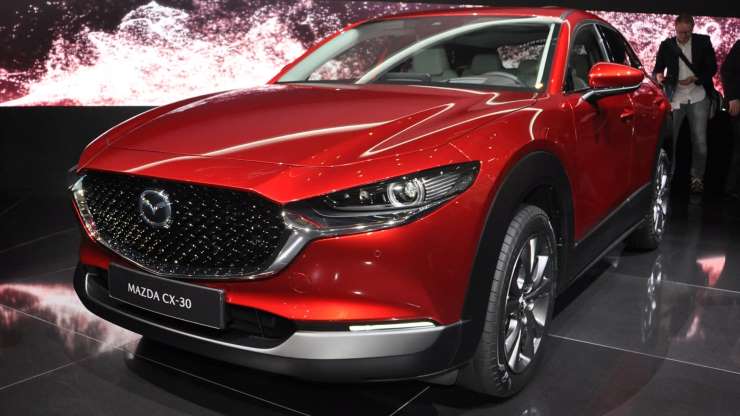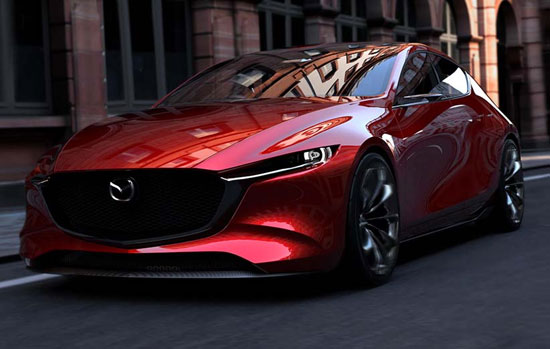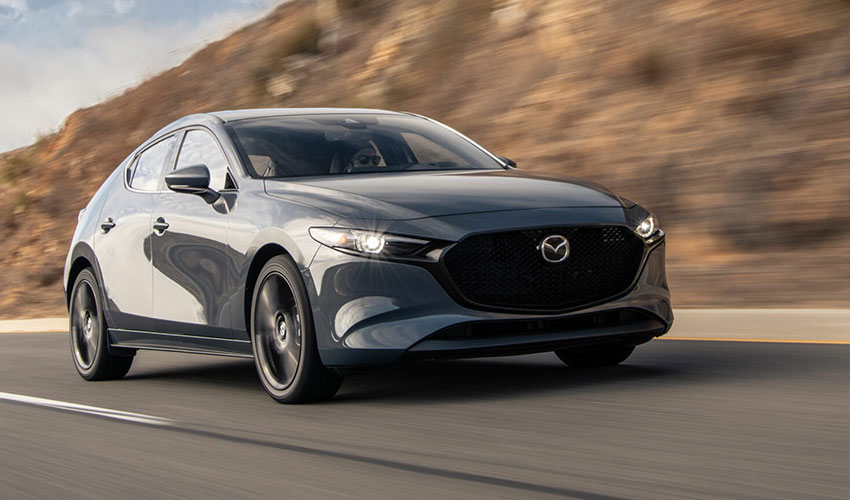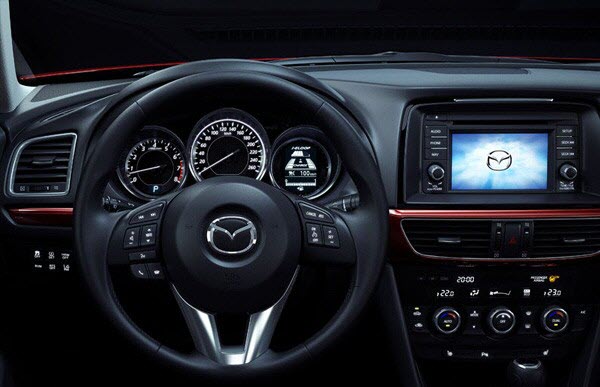Mazda is a renowned automobile manufacturer with a rich history and a reputation for producing innovative and stylish vehicles. Founded in 1920 in Hiroshima, Japan, the company has evolved over the years to become one of the world’s most respected automotive brands.
Here are some key points about Mazda:
Hiroshima Spirit: Mazda’s origin story is closely tied to the city of Hiroshima, which is also known for enduring the atomic bomb during World War II. The company’s founders, led by Jujiro Matsuda, were inspired by the resilience and determination of the city’s people, and this spirit is deeply ingrained in the company’s ethos. Mazda often refers to this as the “Hiroshima Spirit.”
Innovative Engineering: Mazda has a history of pushing the boundaries of automotive technology. They have introduced several groundbreaking innovations, such as the Wankel rotary engine. The rotary engine was used in iconic models like the Mazda RX-7, and it became a symbol of Mazda’s commitment to unique and unconventional engineering.
SkyActiv Technology: In recent years, Mazda has developed its SkyActiv technology, which focuses on optimizing the efficiency, performance, and environmental impact of their vehicles. SkyActiv includes advancements in engine design, transmission technology, lightweight materials, and chassis engineering.
Stylish Design: Mazda vehicles are known for their distinctive and stylish designs. The company places a strong emphasis on the “Kodo” design language, which translates to “Soul of Motion.” This design philosophy aims to capture the dynamic beauty of motion, resulting in vehicles that are both visually appealing and aerodynamically efficient.
Zoom-Zoom: Mazda’s “Zoom-Zoom” philosophy reflects their commitment to producing vehicles that provide an engaging and enjoyable driving experience. They prioritize the connection between the driver and the car, emphasizing driving pleasure as a fundamental aspect of their vehicles.
Global Presence: Mazda has a global presence, with manufacturing and distribution operations in various countries. They sell their cars in numerous markets worldwide, making them a well-recognized and respected brand in the automotive industry.
Partnerships: Mazda has formed strategic partnerships with other automotive manufacturers over the years. Notably, they have had long-standing ties with Ford, which has influenced the development and sharing of technology between the two companies.
Environmental Commitment: Mazda has demonstrated a commitment to sustainability and environmental responsibility. They have worked to improve the fuel efficiency of their vehicles and have explored alternative powertrains, such as hybrid and electric technology, to reduce their carbon footprint.
Popular Models: Some of Mazda’s popular models include the Mazda3, Mazda6, Mazda CX-5, and the iconic Mazda MX-5 Miata, which is one of the best-selling sports cars in history.
Awards and Recognition: Mazda has received numerous awards and accolades for their vehicles, including high safety ratings, reliability, and design excellence. They have consistently ranked as one of the most dependable and innovative car manufacturers in the industry.

History of Mazda Automobile Company:
Mazda’s history is a testament to its ability to adapt, innovate, and create a distinct identity in the competitive automotive industry. The company’s journey from a cork manufacturer to a globally recognized automaker is marked by its commitment to unique engineering, stylish design, and an enjoyable driving experience.
Here’s an overview of Mazda’s history:
Early Beginnings (1920s-1930s):
- Mazda was founded in January 1920 as the Toyo Cork Kogyo Co., Ltd. in Hiroshima, Japan, by Jujiro Matsuda. Initially, the company primarily manufactured cork products.
- In the 1930s, the company diversified into manufacturing machine tools and entered the automotive industry by producing three-wheeled trucks, known as “Mazda-Go.”
Name Change to Mazda (1930s):
- In 1931, the company changed its name to the Toyo Kogyo Co., Ltd., and the first passenger car was introduced under the name “Mazda” in 1931.
- The name “Mazda” was derived from Ahura Mazda, the Zoroastrian god of wisdom, intelligence, and harmony.
The Rotary Engine (1960s):
- One of the most significant milestones in Mazda’s history was the development and commercialization of the Wankel rotary engine. In 1967, Mazda introduced the Mazda Cosmo, a sports car powered by a rotary engine.
- The rotary engine, known for its smooth and high-revving characteristics, became a hallmark of Mazda’s innovation and was used in various models, including the Mazda RX-7 and RX-8.
Global Expansion (1970s-1980s):
- Mazda began exporting vehicles to international markets in the 1960s and established a strong global presence in the following decades.
- They formed strategic partnerships with other car manufacturers, including Ford, which allowed for technology sharing and expansion into new markets.
SkyActiv and Kodo Design (2000s-Present):
- In the 21st century, Mazda introduced its SkyActiv technology, a holistic approach to improving vehicle efficiency, performance, and environmental impact.
- The “Kodo” design language, emphasizing the “Soul of Motion,” became a key element of Mazda’s vehicle design, focusing on aesthetics and aerodynamics.
Environmental Responsibility:
- Mazda has shown a commitment to sustainability, investing in the development of more fuel-efficient engines and exploring alternative powertrains, including electric and hybrid technologies.
- The company aims to reduce its carbon footprint and contribute to a more eco-friendly future.
Iconic Models:
- Mazda has produced a range of popular and iconic models over the years, such as the Mazda3, Mazda6, Mazda MX-5 Miata, and the Mazda CX series of SUVs.
Awards and Recognition:
- Mazda has received numerous accolades, including high safety ratings, reliability awards, and recognition for their innovative engineering and design.

Some models of cars of Mazda Automobile Company:
Mazda offers a diverse range of vehicle models to cater to various customer preferences and needs.Here are some of the different Mazda models available:
- Mazda3: The Mazda3 is a compact car available as both a sedan and a hatchback. It’s known for its stylish design, engaging driving dynamics, and well-appointed interior.
- Mazda6: The Mazda6 is a midsize sedan that offers a blend of elegance, performance, and technology. It’s a popular choice for those seeking a comfortable and refined sedan.
- Mazda MX-5 Miata: The Mazda MX-5 Miata is an iconic sports car known for its lightweight design, excellent handling, and open-top driving experience. It’s available as a convertible roadster or a retractable hardtop (RF) model.
- Mazda CX-3: The Mazda CX-3 is a subcompact crossover SUV, combining compact dimensions with sporty styling. It’s an ideal choice for urban driving and offers available all-wheel drive.
- Mazda CX-30: The Mazda CX-30 is a compact crossover SUV positioned between the smaller CX-3 and the larger CX-5. It provides a balance of size, style, and functionality.
- Mazda CX-5: The Mazda CX-5 is a popular compact SUV known for its upscale interior, excellent handling, and available turbocharged engine option. It’s a versatile choice for those seeking more space and practicality.
- Mazda CX-9: The Mazda CX-9 is a midsize three-row SUV designed for families and those who need additional passenger and cargo capacity. It combines a spacious interior with Mazda’s signature driving dynamics.
- Mazda MX-30 (Electric): The Mazda MX-30 is Mazda’s first all-electric vehicle, designed for eco-conscious consumers. It features distinctive styling and a compact SUV body style.

Challenges facing Mazda Automobile Company:
Mazda, like many other automobile manufacturers, faced several challenges and issues in the highly competitive automotive industry. Some of the key challenges facing Mazda include:
Global Economic Uncertainty: Economic instability and fluctuations in global markets can significantly impact the automotive industry. Factors like trade tensions, tariffs, and currency exchange rates can affect production costs and international sales.
Supply Chain Disruptions: The COVID-19 pandemic highlighted the vulnerability of global supply chains. Disruptions in the supply chain, including shortages of semiconductor chips, can lead to production delays and affect the availability of vehicles.
Environmental Regulations: Stringent emission and fuel efficiency standards imposed by governments around the world necessitate significant investments in research and development to produce more environmentally friendly vehicles. Mazda has been working on reducing emissions and improving fuel efficiency, but meeting evolving regulations remains a challenge.
Electric and Autonomous Vehicles: The shift toward electric and autonomous vehicles presents both opportunities and challenges. Developing competitive electric vehicles (EVs) and autonomous driving technology requires substantial investment in R&D and infrastructure.
Competition: The automotive industry is highly competitive, with numerous global and local players. Staying ahead of competitors in terms of technology, design, and marketing is an ongoing challenge.
Consumer Preferences: Consumer preferences are evolving, and there is a growing demand for more sustainable, connected, and technologically advanced vehicles. Mazda needs to adapt to these changing preferences to remain competitive.
Rising Material Costs: Fluctuations in the prices of essential materials, such as steel and aluminum, can impact production costs and profit margins.
Brand Identity: Maintaining and strengthening the Mazda brand identity, which is built on driving dynamics and stylish design, can be challenging in a market that is increasingly focused on electrification and autonomous features.
Geopolitical Risks: Political instability, trade disputes, and international conflicts can impact Mazda’s global operations, affecting production, distribution, and supply chain stability.
Economic and Technological Shifts: The industry is undergoing significant technological transformations, including connectivity, automation, and mobility-as-a-service. Mazda needs to adapt to these shifts while preserving its core values and customer base.
Sustainability and Environmental Responsibility: Meeting consumer and regulatory demands for sustainability and reduced environmental impact is a key challenge. Mazda must continue to develop and implement eco-friendly technologies.
Market Saturation: In some mature markets, there is a degree of market saturation, making it challenging to expand further without a clear strategy for differentiation.
The story of the name and logo of Mazda Automobile Company:
The name and logo of Mazda Automobile Company have an interesting history that reflects the company’s cultural and historical roots. Here’s the story behind the name and logo:
Name: Mazda The name “Mazda” was chosen for the company in the early 1930s when it transitioned from manufacturing cork products and machine tools to automobiles. The company was initially founded in 1920 as the Toyo Cork Kogyo Co., Ltd. and later changed its name to the Toyo Kogyo Co., Ltd. in 1931.
The name “Mazda” was not a random choice but was carefully selected for its symbolism and uniqueness. It has several significant elements:
- Ahura Mazda: The name “Mazda” was inspired by Ahura Mazda, the Zoroastrian god of wisdom, intelligence, and harmony. The company’s founder, Jujiro Matsuda, and his colleagues believed that this name represented the guiding principles and aspirations they had for their products.
- International Appeal: The name “Mazda” is relatively easy to pronounce and remember in various languages, making it suitable for the company’s ambitions to become a global brand.
- Distinctive: At the time, it was an unusual name for an automobile company, which helped it stand out in the automotive market.
The choice of the name “Mazda” has had a lasting impact on the company’s identity, and it continues to be one of the most recognized names in the automotive industry.
Logo: The Mazda “Wings” The Mazda logo, often referred to as the “Mazda Wings,” is a stylized representation of a pair of wings. It has gone through several iterations and changes over the years, but the basic concept of wings has remained consistent. The logo underwent a redesign in 1997 to give it a more modern and dynamic appearance.
The “Wings” in the logo symbolize several aspects:
- Aspiration: The wings represent the company’s ambition to soar to new heights and achieve excellence in the automotive industry.
- Flexibility: The design of the wings also suggests a sense of flexibility, agility, and the ability to adapt and change, which are essential qualities in the competitive automotive market.
- Movement: The dynamic lines and curves in the logo convey a sense of motion and speed, reflecting Mazda’s focus on driving dynamics and the “Zoom-Zoom” philosophy.
The Mazda logo, with its distinctive “Wings,” is instantly recognizable and has become an emblem of the company’s values and vision.

Conclusion:
In conclusion, Mazda Motor Corporation is a dynamic and innovative automaker with a rich history of resilience, creativity, and adaptability. From its humble beginnings as a cork and machine tool manufacturer in Hiroshima, Japan, Mazda has evolved into a global automotive brand recognized for its unique engineering, stylish design, and a commitment to delivering an enjoyable driving experience.
Throughout its history, Mazda has faced numerous challenges, including economic uncertainties, evolving consumer preferences, and the need to meet stringent environmental regulations. Nevertheless, the company has persevered, adapting to change, and embracing innovation. Mazda’s development of the Wankel rotary engine, its “Zoom-Zoom” philosophy, and the SkyActiv technology are just a few examples of its commitment to pushing the boundaries of automotive engineering.
The name “Mazda,” inspired by the Zoroastrian god of wisdom, symbolizes the company’s guiding principles, while the distinctive “Wings” logo reflects its ambition, agility, and dynamic approach to the industry.
As the automotive landscape continues to evolve, Mazda faces new challenges and opportunities in the areas of electric and autonomous vehicles, environmental responsibility, and changing market dynamics. However, the company’s ability to stay true to its values, embrace innovation, and continue delivering stylish, driver-centric vehicles positions it as a respected and admired automaker.
Mazda’s commitment to driving pleasure, unique design, and a strong brand identity makes it a compelling choice for consumers seeking a vehicle that stands out in the competitive automotive market. With its rich history and dedication to the “Soul of Motion,” Mazda continues to shape the future of driving.
Read this article : Toyota automobile company

Leave a Reply